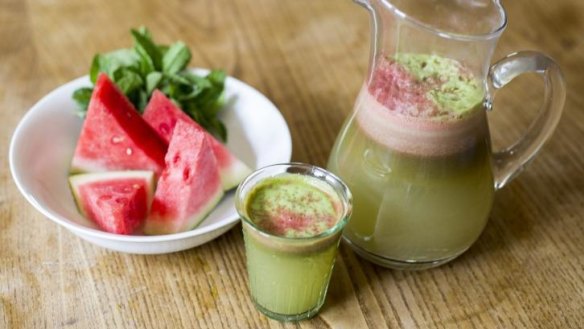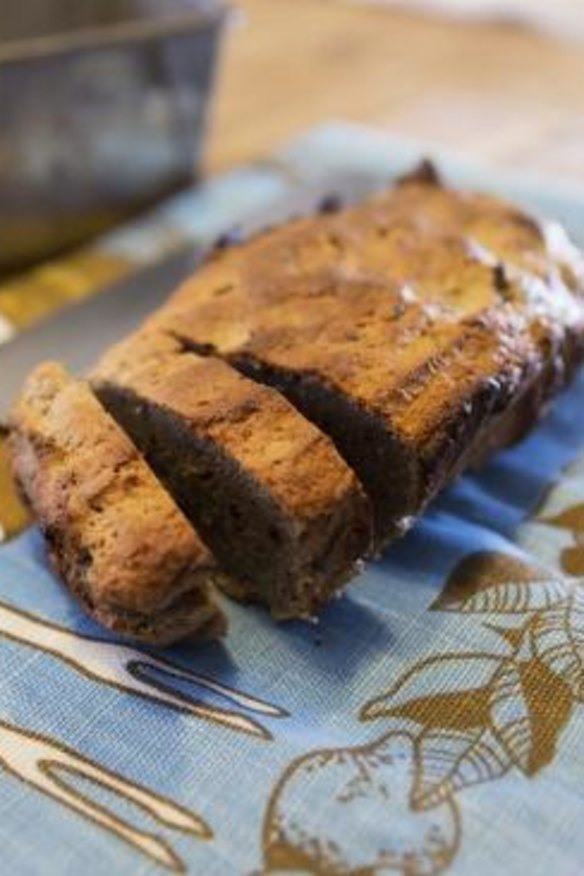Get juicing: recipes for immunity, digestion and a fibre boost

Juicing is an easy way to increase your daily consumption of fresh fruit and vegetables, with minimal effort required.
Here are some tips and recipes.
Vegetables v fruit

Aim for a fruit:vegetable ratio of 3 parts vegetables to 1 part fruit. Fruit is a rich source of fructose (fruit sugar), which occurs in higher concentrations after juicing, so it is best kept to a minimum.
The exception to this rule is sour-tasting citrus fruits such as lemons and limes. These are a great addition to juice as they are a good source of vitamin C and can also counterbalance the flavour of bitter-tasting vegetables.
Best vegetables for juicing
The easiest vegetables to juice are cucumber, fennel, celery, carrots, beetroot and fresh, green leafy vegetables (lettuces, rocket, radicchio).
Not a complete meal
Juicing removes the fibre pulp from fruits and vegetables. This is extremely nutritious and should not be discarded (see tips on how to re-use it below).
Juice also contains minimal protein and fat, so it is not a complete meal. Try to consume fresh juice first thing in the morning, with breakfast followed shortly afterward.
Juice recipes
To aid digestion
Lemon, ginger, lemongrass and mint are excellent aids to digestion. The cucumber and watermelon provide sweetness and plenty of liquid. This juice is best consumed first thing in the morning on an empty stomach.
2 large lemons, peeled
2 large cucumber, topped and tailed
2 cups watermelon cubes
1 inch fresh ginger
1 stick lemongrass
1 generous handful fresh mint (optional)
Process all ingredients through juicer. Add 1 cup of water. Stir and serve.
Serves 2
For immunity
This juice contains fruit and vegetables rich in vitamins A and C; nutrients for helping the immune system function optimally. For an extra kick, increase the quantity of fresh ginger.
2 medium/large carrots
1 green apple
1 large beetroot
2 medium/large lemons, peeled
1 inch fresh ginger root
4 large sticks celery
1 whole, small-sized radicchio, with outer leaves removed
Process all ingredients through juicer. Add 1/2 cup water. Mix well. Serve immediately.
Serves 2
For a fibre boost
This juice contains plenty of green vegetables, which are high in fibre.
4 large sticks celery
1 large fennel
1-2 large cucumbers
1 sour green apple
2cm ginger root, chopped (or more)
1 teaspoon chia seeds (optional)
Process all ingredients through juicer. Remove the pulp from the juicer and process it through the juicer a second time. Stir well and pour into serving glasses.
For added fibre, mix together 1-2 teaspoons of chia seeds with 1/4 cup hot water. Allow to cool, add this to the finished juice together with 2-3 tablespoons of fibre pulp. Mix well and serve.
Serves 2
How to re-use juice pulp
Juice pulp is highly nutritious and a great source of fibre. Try adding it to soups, stews or even meat or vegetable stock. You can also dehydrate it in the oven and use it for crackers (find recipes for raw crackers on the internet), or mix it into a fruit loaf batter (see recipe below). It's also a great addition to your compost or worm farm.
Fruit juice pulp bread loaf (gluten-free, paleo-friendly)
1 1/2 cups juice pulp (from fibre boost recipe only)
1/2 cup psyllium husk
1 teaspoon arrowroot powder
1 tablespoon coconut flour
4 tablespoons coconut sugar
1/2 teaspoon dried ginger
1/2 teaspoon baking powder
1/4 teaspoon cinnamon
1/4 teaspoon mixed spice
2 tablespoons coconut oil
1/4 teaspoon sea salt
4 eggs
1 cup coarsely chopped medjool dates
Method
Prepare the juice pulp by spreading it flat on a baking tray. Place it in a preheated oven at 170C or 150C fan-forced, and bake for 30 mins.
Remove the tray from the oven and turn the pulp over. Return it to the oven and bake for an additional 20 minutes until dry.
In a food processor with a sharp blade, mix together all the ingredients, excluding the dates. Mix to form a smooth paste, stir through the dates, then pour into small bread tin.
Bake for 30 minutes at 200C (or, ideally 180C fan-forced). The loaf is ready when a skewer comes out clean.
The best recipes from Australia's leading chefs straight to your inbox.
Sign up